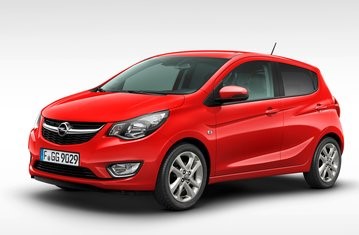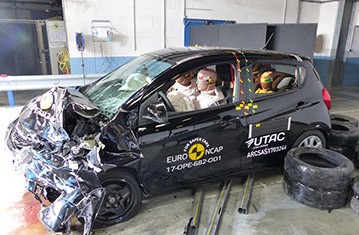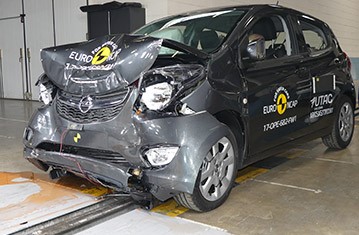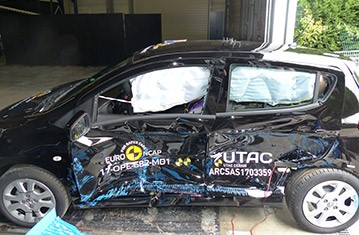- With standard equipment
- With safety pack
Find more information in the General Comments section of the assessment
Find more information in the Rating Validity tab of the assessment
- See More
- See More
- See More
- See More
- Good
- Adequate
- Marginal
- Weak
- Poor
 Passenger
Passenger
 Driver
Driver
 Rear Passenger
Rear Passenger
 Driver
Driver
 Car
Car
 Pole
Pole
 Rear Seat
Rear Seat
 Front Seat
Front Seat
- Good
- Adequate
- Marginal
- Weak
- Poor


Fitted to the vehicle as standard
Not fitted to the test vehicle but available as option
Not Available
-
i-Size CRS
-
ISOFIX CRS
-
Universal Belted CRS
Easy
Difficult
Safety critical
Not allowed
| Seat Position | ||||
|---|---|---|---|---|
| Front | 2nd row | |||
| Passenger | Left | center | Right | |
| Maxi Cosi 2way Pearl & 2wayFix (rearward) (iSize) | ||||
| Maxi Cosi 2way Pearl & 2wayFix (forward) (iSize) | ||||
| BeSafe iZi Kid X2 i-Size (iSize) | ||||
| Maxi Cosi Cabriofix & FamilyFix (ISOFIX) | ||||
| BeSafe iZi Kid X4 ISOfix (ISOFIX) | ||||
| Britax Römer Duo Plus (ISOFIX) | ||||
| Britax Römer KidFix XP (ISOFIX) | ||||
| Maxi Cosi Cabriofix (Belt) | ||||
| Maxi Cosi Cabriofix & EasyBase2 (Belt) | ||||
| Britax Römer King II LS (Belt) | ||||
| Britax Römer KidFix XP (Belt) | ||||
Easy
Difficult
Safety critical
Not allowed
In the frontal offset test, protection of the neck and chest of the 6 year dummy was weak, and that of the neck of the 10 year dummy was poor. In the side barrier test, protection of all critical body areas was good. The front passenger airbag can be disabled to allow a rearward-facing child restraint to be used in that seating position. Clear information is provided to the driver regarding the status of the airbag and the system was rewarded. The Karl is not compatible with i-Size restraints and, as a result, the installation check of any such restraints was deemed a fail. In addition, the large rearward-facing Group 0+/1 restraint could not be accommodated in the rear centre position.
- Good
- Adequate
- Marginal
- Weak
- Poor

Head Impact 15.9 Pts
Pelvis Impact 2.6 Pts
Leg Impact 6.0 Pts
The protection offered to the head of a struck pedestrian was mixed with areas showing good results and others, mainly on the stiff windscreen pillars, giving poor results. The bumper provided good protection to pedestrians' legs but protection of the pelvis was predominantly poor.
- Good
- Adequate
- Marginal
- Weak
- Poor
| Applies To | All seats | ||
| Warning | Driver Seat | Front Passenger(s) | Rear Passenger(s) |
| Visual | |||
| Audible | |||
|
|||
The Karl has a seatbelt reminder for the front and rear seats. A lane departure warning system and a driver-set speed limiter are available as an option but are not included in this rating.
- Specifications
- Safety Equipment
- Videos
- Rating Validity
Specifications
Tested Model Opel Karl 1.0 'Enjoy', LHD
Body Type - 5 door hatchback
Year Of Publication 2017
Kerb Weight 920kg
VIN From Which Rating Applies - all Karls
Class City and Supermini
Safety Equipment
Note: Other equipment may be available on the vehicle but was not considered in the test year.
Fitted to the vehicle as standard
Fitted to the vehicle as part of the safety pack
Not fitted to the test vehicle but available as option or as part of the safety pack
Not available
Not applicable
Videos
Rating Validity
Variants of Model Range
| Body Type | Engine | Drivetrain | Rating Applies | |
|---|---|---|---|---|
| LHD | RHD | |||
| 5 door hatchback | 1.0 petrol* | 4 x 2 |  |
 |
| 5 door hatchback | 1.0 petrol + LPG (Bi-fuel) | 4 x 2 |  |
N/A |
* Tested variant

Find more information in the General Comments section of the assessment
The Karl was originally assessed by Euro NCAP in 2015. For this re-assessment, most tests have been re-done as the test protocols have changed in the intervening two years. However, where the car and test protocols are unchanged, results have been carried over from the 2015 assessment.
 Share
Share











The passenger compartment of the Karl remained stable in the frontal offset test. Dummy readings indicated good protection of the knees and femurs of the driver and passenger. Opel showed that a similar level of protection would be provided to occupants of different sizes and to those sat in different positions. In the full-width rigid barrier test, the pelvis of the rear passenger dummy slipped beneath the lap portion of the seatbelt, and protection of this body area was rated as poor. Protection of the chest was rated as marginal, based on dummy readings of chest compression. Protection of all critical body areas was good for the driver dummy. In the side barrier test, protection of all critical parts of the body was good and the Karl scored maximum points. However, in the more severe side pole impact, the head 'bottomed out' the curtain airbag and the resulting high decelerations indicated poor protection of this body area. Chest protection was rated as marginal based on dummy readings of rib compression. Tests on the front seats and head restraints demonstrated marginal protection against whiplash injury in the event of a rear-end collision. A geometric assessment of the rear seats also indicated marginal whiplash protection.